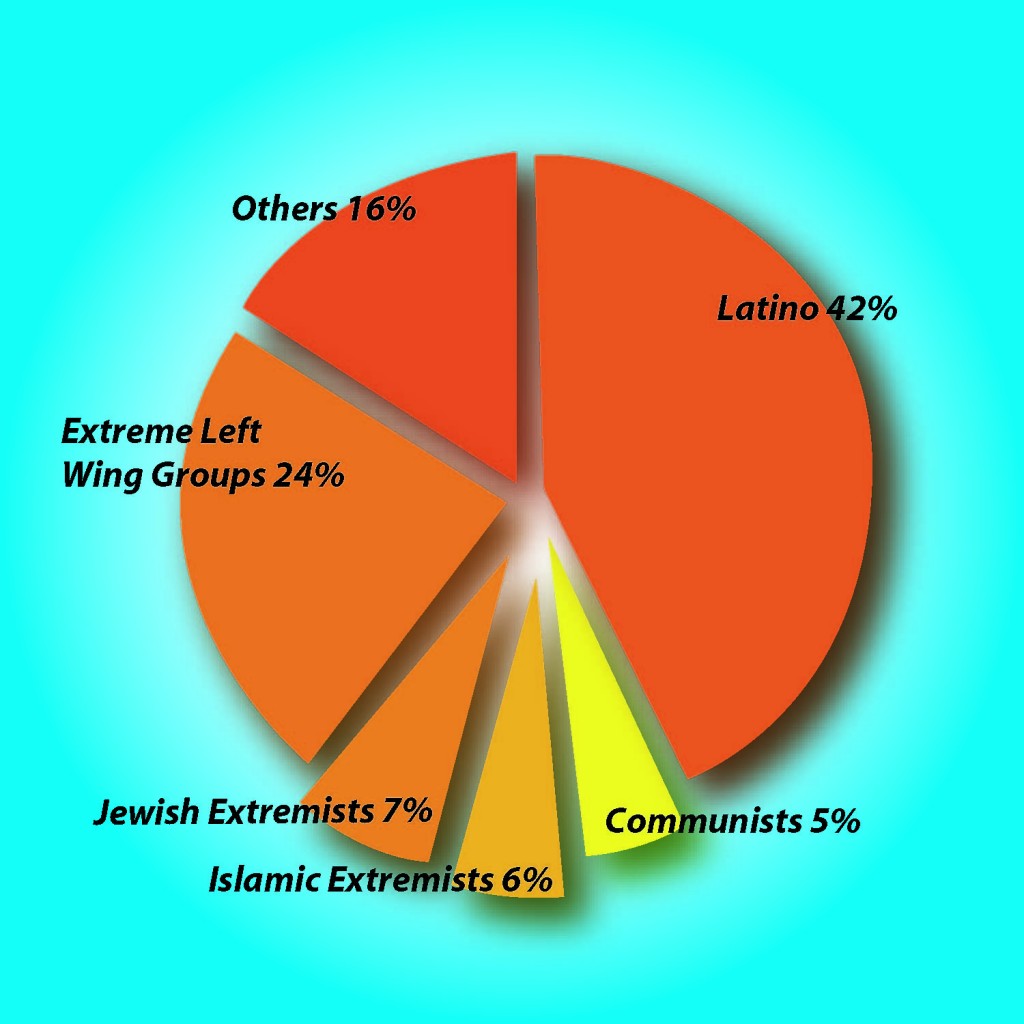It’s a common refrain in the media, that the threat of terrorism comes from Islamic extremism.
Not true, according to a new study revealed by researchers at Duke University and the University of North Carolina at Chapel Hill, Anti-Terror Lessons of Muslim-Americans, which suggests that only 6% of terrorist attacks on the U.S. are from Muslims.
CNN describes the inclusion criteria used for the study:
To be included on the list, an offender had to have been wanted, arrested, convicted or killed in connection with terrorism-related activities since 9/11 — and have lived in the United States, regardless of immigration status, for more than a year prior to arrest.
The study also notes that strong partnerships and support of Muslim institutions are necessary to prevent the radicalization of Muslims. To date, we’ve often have initiatives that accomplish the opposite. Muslim terrorists also had very little to do with Islam,
This research confirmed what has been observed in other studies of Muslim terrorists: most of those who engage in religiously inspired terrorism have little formal training in Islam and, in fact, are poorly educated about Islam. Muslim- Americans with a strong, traditional religious training are far less likely to radicalize than those whose knowledge of Islam is incomplete.
The implications of the findings also suggest there is disproportionate attention by the media and security officials on threats that are comparatively negligible, which may actually accentuate this specific risk over time.
Placed in context with data over the past 30 years, we get a very different picture (graph sent to us by a reader):


Does the chart come from the study because it is really strange, which would make me question the whole study if it did.
It mixes politics, religion and ethnicity which makes me wonder what they are measuring and how groups/individuals get slotted into a category. Seems like pretty sloppy Social Science to me. I never would have got away with that in university.
What if your a left wing Latino group, which category are you in. And why are Communists separated from extreme left wing groups.
AND why are there no right wing terrorists or Christian terrorists.
I’d hate to see people like Beck and Limbaugh use that chart to simply switch from an anti-Muslim crusade to an anti-Latino crusade.
If the chart does not come from the study it is misleading to simp,ly attach it to the bottom of the post.
Law is Cool: The image was sent to us by a reader, and was drawn from the statistics linked from the image. The Latino groups seem to reflect primarily Cuban and Puerto Rican groups, which is probably why they are separated out. Labeling and grouping is admittedly an arbitrary process. The right-wing groups are presumably in the “Other” category.
The FBI report elaborates,
The breakdown may also reflect the shifting nature of various threats,
Any specific group unusually targeted for a crusade or preeminent mission is not a good idea, and probably doesn’t reflect an accurate risk assessment. This recent study introduces an additional nuance into the analysis.
I agree that group-based stratification is not a good idea.
But even behaviour-based risk assessment easily goes faulty when those involved are poorly informed, which is almost always the case.
Look at the Jewish teen who raised concerns recently just by putting on tefillin on U.S. Airways Express Flight 3079 from LaGuardia to Louisville, forcing it to land in Philadelphia, where he was warmly greeted by police, federal agents, and bomb-sniffing dogs.
(did he say “olfactory“?)
It looks something like this:
Watch out now!
I just want to mention I’m new to blogging and site-building and actually enjoyed this web-site. More than likely I’m want to bookmark your blog . You surely have outstanding posts. Cheers for sharing your web site.
I don’t think any religion promotes killing without fair reasons. Look at the koran which people often misquote because of their racisim: “[002:190] Fight in the way of Allah against those who fight against you, but begin not hostilities. Lo! Allah loveth not aggressors.
[002:191] And slay them wherever ye find them, and drive them out of the places whence they drove you out, for persecution is worse than slaughter. And fight not with them at the Inviolable Place of Worship until they first attack you there, but if they attack you (there) then slay them. Such is the reward of disbelievers.
[002:192] But if they desist, then lo! Allah is Forgiving, Merciful.
4 years ago
[002:193] And fight them until persecution is no more, and religion is for Allah. But if they desist, then let there be no hostility except against wrong-doers.”
As you can see you can’t read one verse or line of anything and make a judgement. In the koran there is a condition on which muslims are allowed to fight and that is if they are attacked. Muslims cannot start fights themselves. You can’t trust an extremist when he says he is doing something for god. He is simply poorly educated and would you trust someone trying to kill you? Islam promotes peace not hate like so many people say it does out of racism.